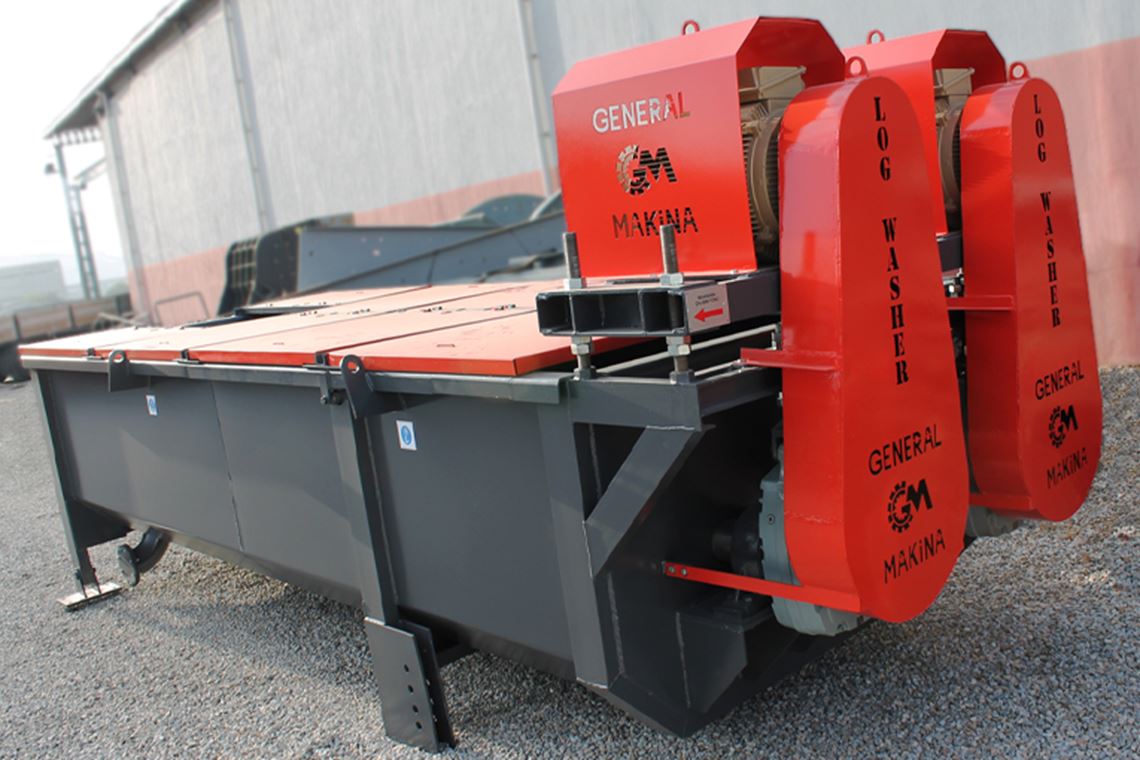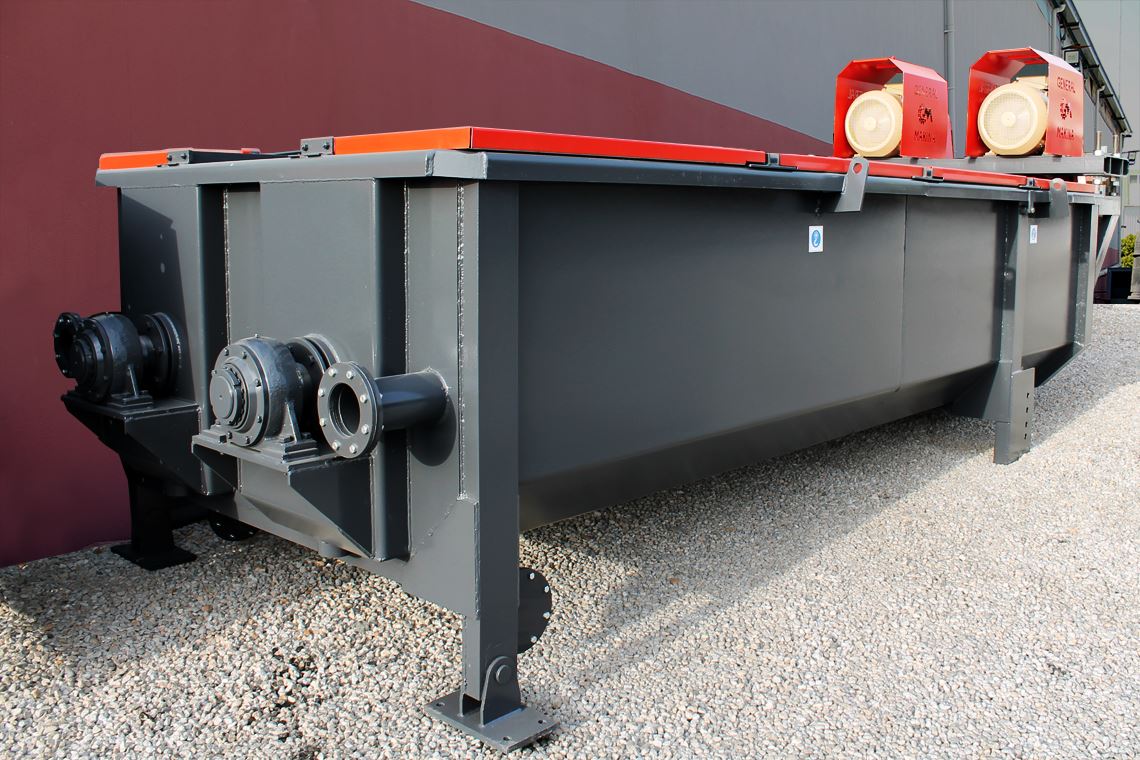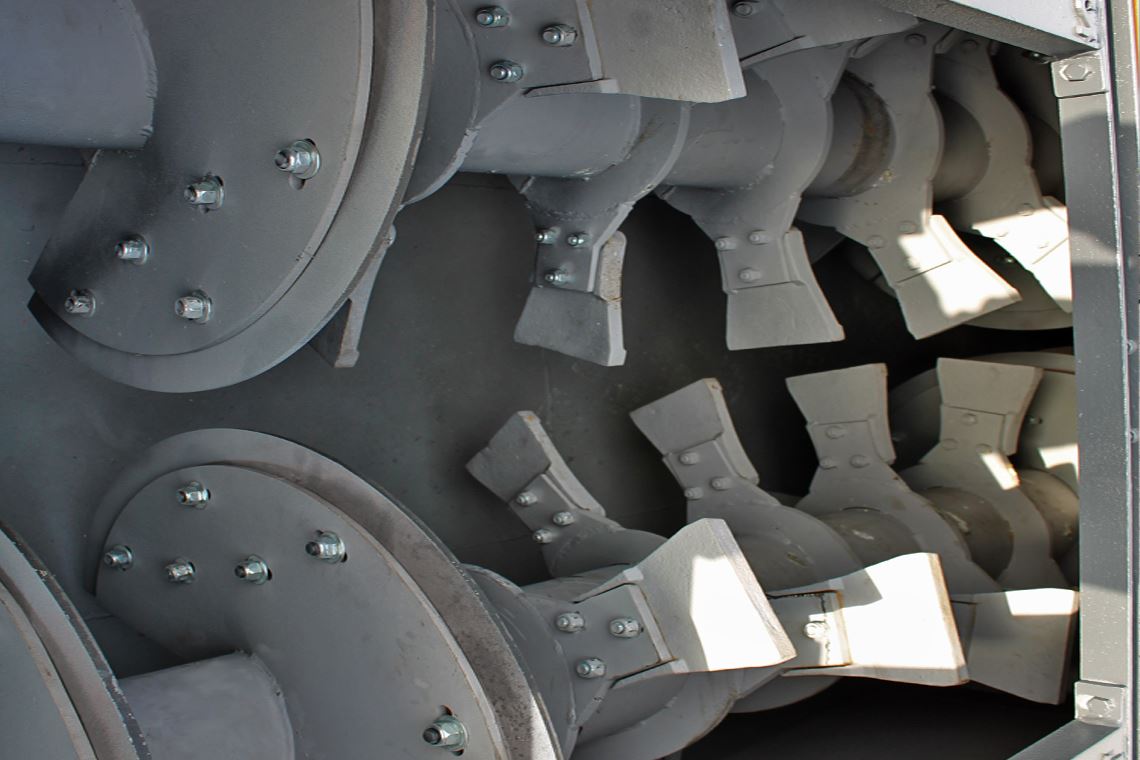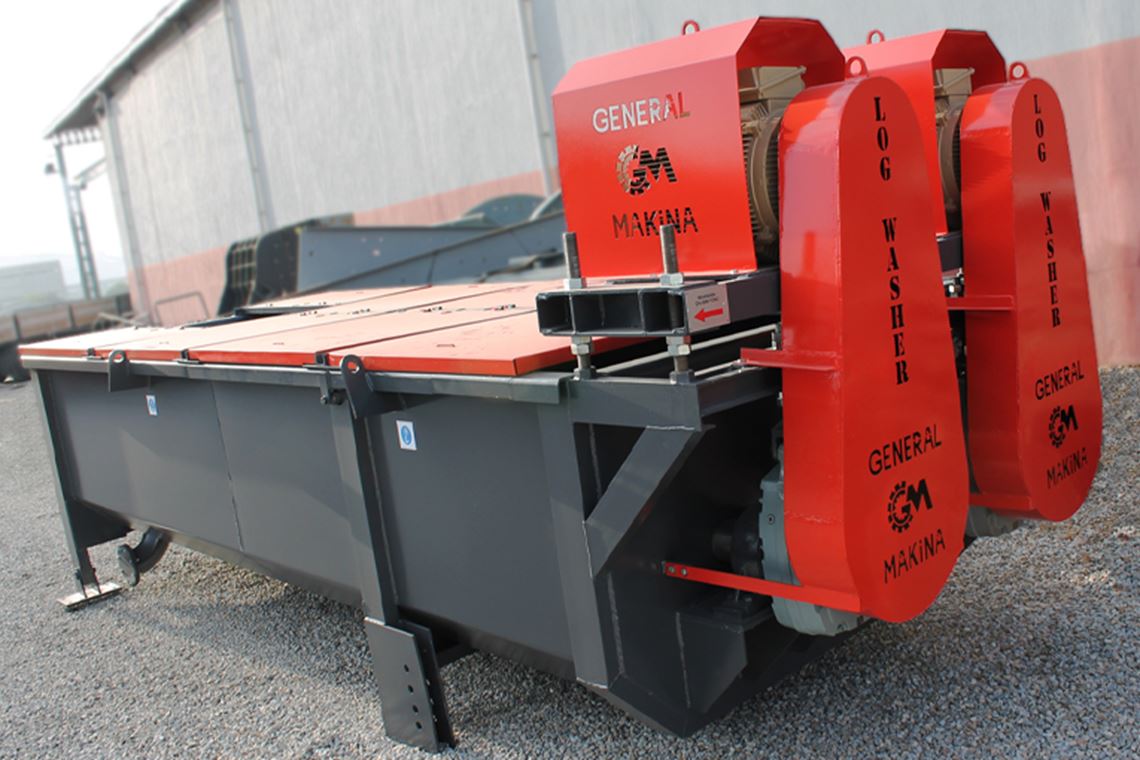- Ekipman General Makina 01 Konkasör Tesisi
- Besleme Açıklığı 1.000 x 650 mm (40 x 26 inç)
- Maksimum Besleme Boyutu 520 mm (21 inç)
- Kapasite 225 metrik ton/saat (248 kısa ton/saat)
Sand, gravel and various ores obtained naturally from stream and river beds or as final products from stone crushing and screening facilities are used in different sectors, in pure form, that is, separated from each other and foreign materials; It is cleaned from clay, silt or alluvium residues.
The log washer, which basically looks like a screw washer, is simply created by the mechanical impacts applied to the boiler water and the materials inside by the wear-resistant paddle arms on the 2 engine-reducer driven log shafts located in the washing tub, rotating opposite each other at the same speed. It separates dirty materials and materials from each other and transfers them out through the discharge chute. The biggest difference that distinguishes it from normal screw washers is that it can also wash larger materials or stones.
Sand, gravel and mineral ores cleaned in this way meet the demands in the building - construction, industry and chemical sectors. Particularly the aggregate need of concrete plants is one of the best examples of this.
Excess water in the system is discharged through discharge chutes before it can exceed the level allowed by the working angle determined in the machine installation. If desired, water expense in the system can be reduced to a minimum with the optional circulation pump.
Log Washer can be produced as fixed or mobile upon request. Rotor bearings are mounted so that they are not affected by water. The rotor shaft passage points inside the washing tub are sealed against water. The shovel arms of the log shafts contain manganese alloy, and the heads attached to the arms have sealing nuts and are easy to replace.
Optional:
- Frequency controlled speed unit
- Automatic lubrication unit
- Rinsing device with nozzles
- Water circulation pump
- Hardox boiler coating

 TR
TR EN
EN RU
RU FR
FR ES
ES AR
AR SR
SR





